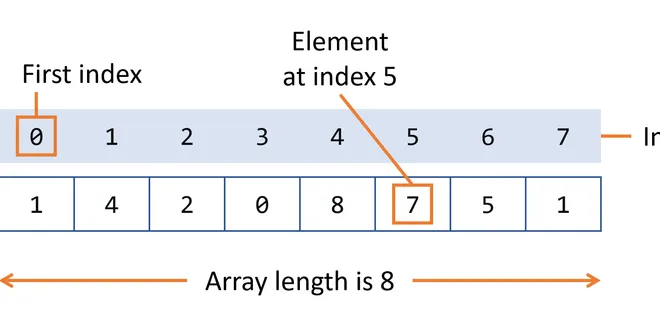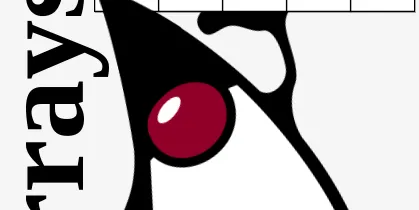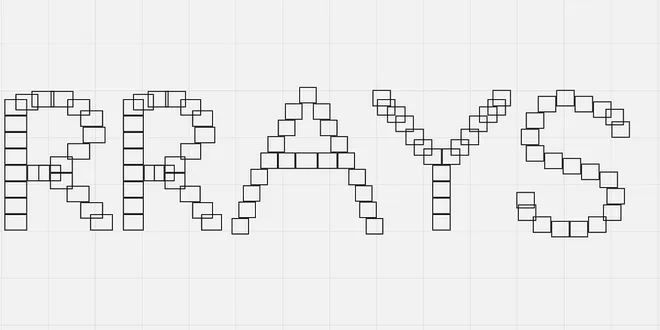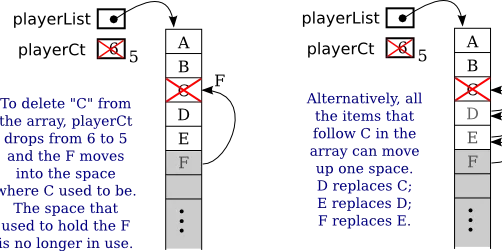Arrays
An array is a fundamental data structure in computer programming that allows the storage of multiple values of the same type in a single variable. Each value, known as an element, is stored in contiguous memory locations and can be accessed using an index, which represents its position within the array. Arrays are fixed in size, meaning their length is determined at the time of creation and cannot be changed later. They are widely used for organizing data, enabling efficient data manipulation and retrieval, making them essential for various programming tasks and algorithms.

Array Details
Section 7.1 Array Details A rray basics have been discussed in previous chapters, but there are still details of Java syntax to be filled in, and there is a lot more to say about using arrays. This se...
📚 Read more at Introduction to Programming Using Java🔎 Find similar documents

Creating Arrays in Your Programs
Arrays An array is a container object that holds a fixed number of values of a single type. The length of an array is established when the array is created. After creation, its length is fixed. You h...
📚 Read more at Learn Java🔎 Find similar documents

Chapter 8 Arrays
Up to this point, the only variables we have used were for individual values such as numbers or strings. In this chapter, we’ll learn how to store multiple values of the same type using a single varia...
📚 Read more at Think Java🔎 Find similar documents

Arrays
Individual variables are classified as scalars. A scalar can assume exactly one value at a time. As we have seen, individual variables can be used to create some interesting and useful programs. Scalar...
📚 Read more at Object-oriented Programming in Java🔎 Find similar documents

An Introduction to Arrays: Applications, Advantages, and Disadvantages
Array Introduction:In computer programming, an array is a collection of similar data items stored in contiguous memory locations. Each element in an array is identified by an index or a key value, whi...
📚 Read more at Javarevisited🔎 Find similar documents

Arrays in Java
Let's define what an array is.This container has a length (capacity), size, and indexes. The capacity of an array is the quantity of “cells” the array has. And the size…
📚 Read more at Javarevisited🔎 Find similar documents

Arrays in C++
Why we need Arrays? Suppose a class consists of five students. If we want to store their names programatically, we can store them one by one in variables with meaningful names like student_1, student...
📚 Read more at Level Up Coding🔎 Find similar documents

The Complete Guide to Using Arrays in JavaScript
Arrays are lists of objects that can be manipulated in various ways. Each entry can be accessed by their own index. Arrays can be combined in various ways and they can be also be nested in each…
📚 Read more at Better Programming🔎 Find similar documents

Arrays
Objects allow you to store keyed collections of values. That’s fine. But quite often we find that we need an ordered collection , where we have a 1st, a 2nd, a 3rd element and so on. For example, we n...
📚 Read more at Javascript.info🔎 Find similar documents

Working with Arrays
Arrays are implemented in the Java virtual machine. The only methods on arrays are those inherited from Object. The length of an array is not part of its type; arrays have a length field which is acc...
📚 Read more at Learn Java🔎 Find similar documents

Array Processing
Section 7.2 Array Processing M ost examples of array processing that we have looked at have actually been fairly straightforward: processing the elements of the array in order from beginning to end, o...
📚 Read more at Introduction to Programming Using Java🔎 Find similar documents

Array Based Sequences in Python
An array is a fundamental data structure available in most programming languages and it has a wide range of uses across different algorithms. There are more low-level concept and they were used in…
📚 Read more at Analytics Vidhya🔎 Find similar documents

